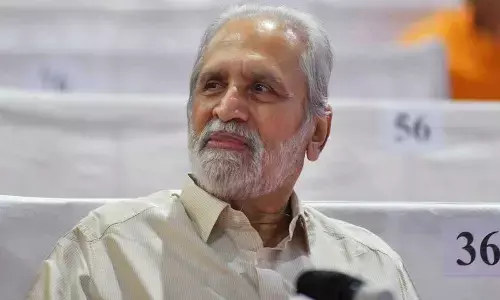Invest in banking, NBFCs, to bump up your portfolio

Invest in banking, NBFCs, to bump up your portfolio
Thematic funds with a horizon of 3-5 yrs with an allocation of up to 15% could be rewarding
When the pandemic was in its nascency last year, everyone was clueless on how the economy would recover from the lows. The lockdowns and the subsequent restrictions had adversely impacted trade and thus there was an alarming concern about how the various businesses operate. The government on its limited path had resorted to issue moratorium on loans providing a brief respite for the business community. While this measure alleviated the pain in the system, albeit temporarily, the prospects of how the banks and other financial (lending) institutions recuperate a moot point.
RBI on its part has ensured sufficient liquidity to the system while selectively infusing bouts of money to the needed. Also, has pulled the rates down while simultaneously prepping growth with disparity between the repo and its repurchased rate. These factors have not only averted any hostile conditions but have strengthened the overall stability in the financial system, improving credit conditions as the policy reverts to normalcy.
The banks having faced credit crunch and defaults in the recent years have got into action very proactively. The lessons from the Great Financial Crisis (GFC '08) to the industry made them to raise capital (taking advantage of the lower cost of funding) and were equipped for any eventuality. They have also provisioned enough capital for the worst-case scenario as no one was sure of how long it would take for the normalcy to set in. With each passing quarter, as the economy began to pick up and make strides (despite a devastating second wave of infections), the threat of defaults reduced.
The non-performing loan book didn't turn out as bad as they had anticipated even as the asset quality remained desirable. Sensing the same, Moody's, an international credit rating agency has upgraded the outlook for most of the banks to stable from negative outlook. A statement said that the decision to change the outlook to stable reflects Moody's view that the downward risks from negative feedback between the real economy and financial system are receding. With higher capital allocation and greater liquidity, banks and non-bank financial institutions pose much lesser risk to the sovereign than Moody's previously anticipated.
The war chest built by the banks allows them to take advantage of the reviving credit growth as the economy moves on the mend. Undoubtedly, banking and related services remain the most dominant sector in the economy, thus gaining a lion's share in the market composition. The continued underperformance in recent years at the back of multiple disruptions along with the technological advancements has pulled their performance. The current situation is still burgeoning but seems very promising in the medium to long term horizon.
Moreover, the non-banking financial services like that of the asset management, broking, insurance have shown positive momentum in recent years. The aggressive adoption of technology, the lowered customer acquisition costs, the benefits of cross-offerings have largely enhanced the value proposition to these businesses. Also, as the awareness grows in the organized ways of saving and investing, the expansion of these services is apparent. Then we've the insurance companies which are expanding as they mature even as they tinker their business models to suit the changing demographics, preferences and buying behaviour. Technology adoption has helped not just reduce the cost but improved the customer experience in these sectors which earlier lacked any excitement.
Of course, the consumer finance has been another largely hit sector during the pandemic but has roared back equally strong in recent months. The trends, however, show that the momentum is not just the latent demand but a growing and emerging trend that would outpace with further urbanization. This macro trend is also impacting the housing finance with the lowered interest rates are an added advantage to it.
With this backdrop, an eclectic mix of quality banks and other non-banking financial institutions could provide for an investment opportunity at this point of time. Investors trying to make to take benefit of this evolving consequence could alternatively pick the banking and financial sectoral or thematic funds with a horizon of 3-5 years. An allocation of up to 15 per cent for an aggressive investor could create considerable bump-up in the portfolio.
(The author is a co-founder of 'Wealocity', a wealth management firm and can be reached at [email protected])










